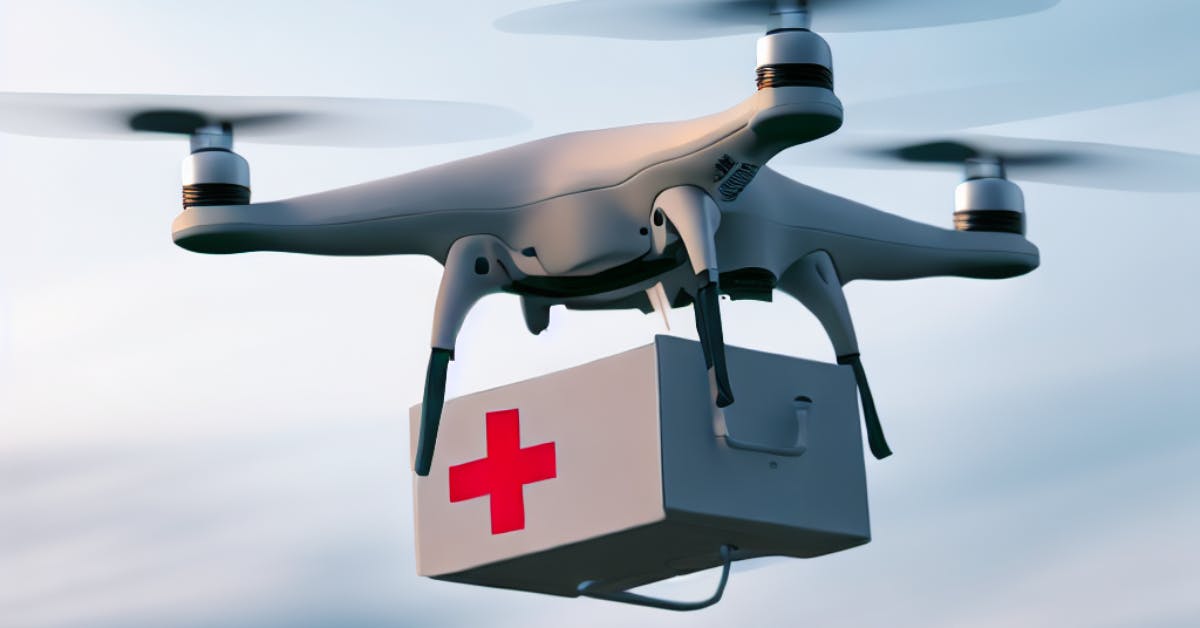An unexpected ally in the fight against the opioid crisis: Delivery drones
Seven minutes.
That’s how quickly delivery drones carrying the opioid blocker Naloxone can reach opioid overdose patients, according to researchers from King’s College London.
The study even found that this delivery method beats ambulances in the race to the scene.
In these medical emergencies, time in administering Naloxone is often the difference between life and death. So, these study results could transform emergency response for the better.
But are consumer-grade drones likely to enter the medtech arena? Stick with us as we look into it.

Racing against the clock to save overdose patients
In England, where this study was conducted, seven minutes is the benchmark time for how quickly emergency responders should reach high-priority Category One calls. However, even in best-case traffic conditions, only about 14 percent of ambulances reach cases in this goal time.
The consumer-grade drones were able to beat that number, reaching 78 percent of cases in the goal time.
“When a person overdoses and stops breathing, every second counts,” said lead study author Dr. Caroline Copeland. “Naloxone is very effective when given at the first signs of overdose and is easy to use.”
The U.K. is not the only place where the potential for this technological intervention has been realized. Another study conducted in Durham, North Carolina, found that a drone delivery network shaved over six minutes off the eleven-minute average response times to opioid overdose 911 calls.
Plus, with advances in both drone technology and geospatial modeling capabilities, applying these models to future real-world scenarios could be even more effective than these results suggest. The KCL study authors estimated that their drones would be 98% effective at hitting the seven-minute benchmark if an insulated cargo cradle and enhanced drone speed allowed them to combat low temperatures and high winds.
Of course, drones are not a foolproof solution to emergency response delays. Bystanders would still need to administer the naloxone, emphasizing the need for greater public awareness of and comfort with using the life-saving drug.
A future partnership? What the consumer drone market may hold for medtech
Drone delivery is already here.
SkyDrop (formerly Flirtey) received approval from New Zealand’s Civil Aviation Authority earlier this year for live store-to-door delivery. The company is even set to get into pizza delivery through its partnership with Domino’s.
But years before this news, they were already delivering portable defibrillators to cardiac 911 calls in Nevada, through a partnership with emergency dispatcher REMSA Health.
Now, Amazon has gotten into the pharmaceutical drone delivery game with Prime Air delivery in Texas. Drone developer Matternet has partnered with a Swiss hospital system to enable lab-to-clinic sample exchange via drone. And Zipline is delivering medical supplies to remote areas in Rwanda.
Clearly, delivery drones are ripe for disruption across the healthcare space. However, not all applications of this technology are as easy to achieve.
A particular challenge to translating this research into real-world scenarios is scalability. The KCL researchers noted that their approach was a good fit for semi-urban residential areas, but that central urban areas would be more challenging to access via drone. SkyDrop started its medical delivery in Nevada because the state was known to be friendlier than others to drone tests.
At the same time, the geospatial mapping and customization to emergency response allocations and pathways would likely need to be customized to each context—and it would need to fit into the patchwork of emergency response dispatchers and coverage areas specific to locations.
We can imagine artificial intelligence would be a good partner for building out such wider geospatial models. However, buy-in from governments and emergency response companies would still be required to successfully delegate responsibilities to delivery drones.